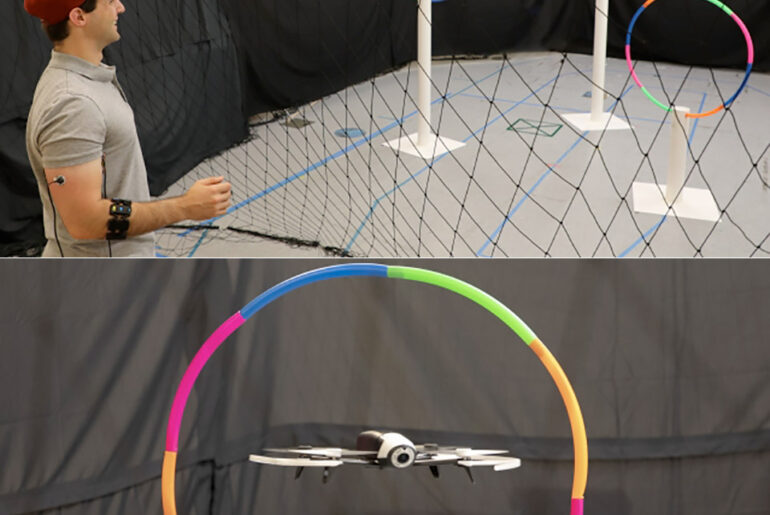
Why bother with a remote control, when you can just use your muscles? MIT’s Computer Science and Artificial Intelligence Laboratory (CSAIL) developed a system, called “Conduct-A-Bot,” that uses human muscle signals from wearable sensors to pilot a robot’s movement. It consists of electromyography and motion sensors worn on the biceps, triceps, as well as forearms to measure muscle signals / movement.
Algorithms are then used to proces the signals to detect gestures in real time, without requiring any offline calibration or per-user training data. The system needs only two or three wearable sensors, and no hardware in the environment, thus reducing the barrier to casual users interacting with robots. You can use gestures, such as clenched fists, tensed arms, and activated forearms, to move the drone left, right, up, down, and forward, as well as allow it to rotate and stop.
- Batman action figure – Put DC Super Hero action into kids’ hands with the LEGO DC Batman Construction Figure (76259). Fully jointed for...
- Iconic Super Hero – The 275-piece DC action figure features movable shoulder, arm, hip and leg joints and includes the character’s distinctive...
- Position and pose – The multi-jointed figure easily adjusts, allowing kids to recreate favorite movie scenes and play out endless imaginative...
We envision a world in which machines help people with cognitive and physical work, and to do so, they adapt to people rather than the other way around,” said Professor Daniela Rus, director of CSAIL, deputy dean of research for the MIT Stephen A. Schwarzman College of Computing, and co-author on a paper about the system.




